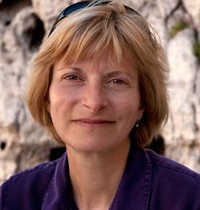NOTE: Images in this archived article have been removed.

As the Colorado River flows through its delta for the first time in many years, parched landscapes are transformed overnight. Photo by Alexandra Verville/National Geographic
It’s a rare event to see a river literally form before your eyes.
But each day that we ventured out to find the leading edge of the Colorado River as it advanced through its delta during this
historic “pulse flow,” we were treated to exactly that phenomenon: a dry, sandy channel that hasn’t seen water in 16 years suddenly became a rivulet, then a stream, then a glorious flowing river.
For me, some of the most powerful experiences have come from visiting the same location twice – before the river got there, and then again after its arrival.
One morning, we visited a dry, sun-baked, sand-filled channel that, more than anything else, evoked sorrow and loss. My main memory of that first stop at Reach 3 was of the Universidad Autónoma de Baja California hydrology team’s pick-up truck getting stuck in the deep channel sands that the Colorado River had delivered there many years ago.
When we returned to the same spot a few days later, the river was running through it – and the landscape had been completely transformed.
We arrived at sunset, and the beauty was breathtaking. Could this possibly be the same place where the truck had gotten trapped? Why had we not brought a picnic dinner to enjoy by the river’s bank?

Photo by Cheryl Zook/National Geographic
Further downstream at the Laguna Grande restoration site, before the river’s arrival, we encountered a majestic mesquite atop a mound of earth with only a pool of shallow groundwater visible beneath it.
About 11 days later, the tree was surrounded by the river’s rising waters.

Photo by Cheryl Zook/National Geographic
Also at Laguna Grande, we visited a vegetation research plot (right) established by Sonoran Institute’s Karen Schlatter. Returning a few days later, we got the soul-soothing sight of young saplings receiving a deep, cool drink of the Colorado as it journeyed on toward the sea.
With the pulse flow now in its fourth week, the river is receding in upper reaches and rising downstream in others.
The Colorado River’s transformation of the landscape continues.







